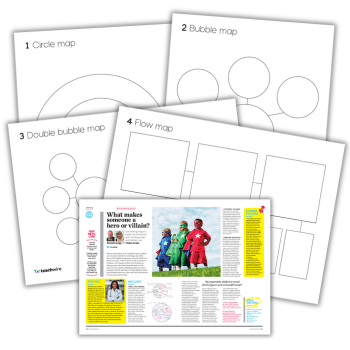Badock’s Wood Primary – Using collaboration to improve behaviour

Jonathan Arthur and Gemma Hewson explain how collaboration has improved behaviour and raised pupils’ achievement in their school…

- by Teachwire

At Badock’s Wood Primary School, we’ve put in place three key strategies to support collaboration and reduce the impact of poor behaviour and improve teaching and learning across the school.
Recent research has shown that almost a quarter of lesson time in mainstream primary and secondary schools in England is lost because of poor behaviour.
It affects teachers, too. Almost three quarters of those surveyed reported that pupil misbehaviour has had a negative effect on their health and wellbeing.
But working together, teachers can find effective ways to tackle the issues they face.
Friday morning briefings
Collaborative working has been formalised with our Friday morning briefings at Badock’s Wood Primary. Here, we come together to share our challenges, learnings, and successes.
These meet-ups provide different viewpoints staff can draw on to address any issues they’re struggling with.
One of our ECTs recently observed that her previously calm pupils often became loud and over-energetic as they moved from the classroom to breaktime.
Sharing her predicament with colleagues allowed us to ask questions about what happened right before the noisy behaviour started.
This highlighted the need for clearer instructions at the end of the lesson. Colleagues suggested a change of pre-break time routine to help the children navigate the transition more quietly.
Chatting the issue through helped the teacher think outside the box to solve the problem. She took the suggestions and came up with a different routine that helped pupils make a smoother journey to the playground.
She is now using the suggestions to support a better transition the other way as well – from the playground back into the classroom.
A second pair of eyes
It’s not always easy to spot causes of classroom disruption or the barriers that hold children back. We’ve found teachers benefit significantly from having an extra pair of eyes in lessons.
All our classrooms are kitted out with video cameras, which teachers can use to record lessons if they wish.
Viewing the footage, they can reflect on their own teaching or share clips with colleagues to discuss issues and continuously improve their practice.
One of the benefits of working in this way is that it helps teachers ensure each child gets the support they need. This can be particularly effective for supporting disadvantaged pupils or those with SEND.
Being able to review the footage gives teachers the opportunity to improve their adaptive teaching techniques.
They can spot when they need to explain a mathematical concept more clearly or make lessons more interactive to keep children engaged. This encourages all students to reach their full potential.
A Year 6 colleague noticed a group of pupils on one side of the classroom rarely completed tasks when instructions were written on the whiteboard.
The children seemed engaged in the lesson. However, when it came down to writing their poem or making their climate change poster, they just didn’t get much done.
Reviewing the video footage, recorded using ONVU Learning, she observed that her back was often turned towards one side of the room. This meant the pupils she was concerned about couldn’t see what she was writing on the board.
To remedy this, the teacher changed her classroom layout, placing the desks in a horseshoe shape. She also put a big cross in red tape on the floor to remind her where to stand.
School-wide issues
Collaboration is also helping to address whole-school issues, such as the development of children’s spoken language.
Many of our pupils would write pages of beautiful text with facts about the great fire of London or tectonic plates, for example. But when asked to share orally what they had learnt, they struggled to articulate it.
Following staff consultation, we decided to remove written requirements in many lessons. This may seem a drastic move, but with everyone behind it the strategy has improved children’s confidence in expressing themselves. Outcomes have improved across the wider curriculum, too.
Through greater collaboration, we’ve improved outcomes for our pupils. We’ve also encouraged them to articulate their knowledge and passions, setting them up to take their place in the world.
Jonathan Arthur and Gemma Hewson are senior leaders at Badock’s Wood Primary E-ACT academy. Jonathan is executive headteacher and Gemma is deputy headteacher.










